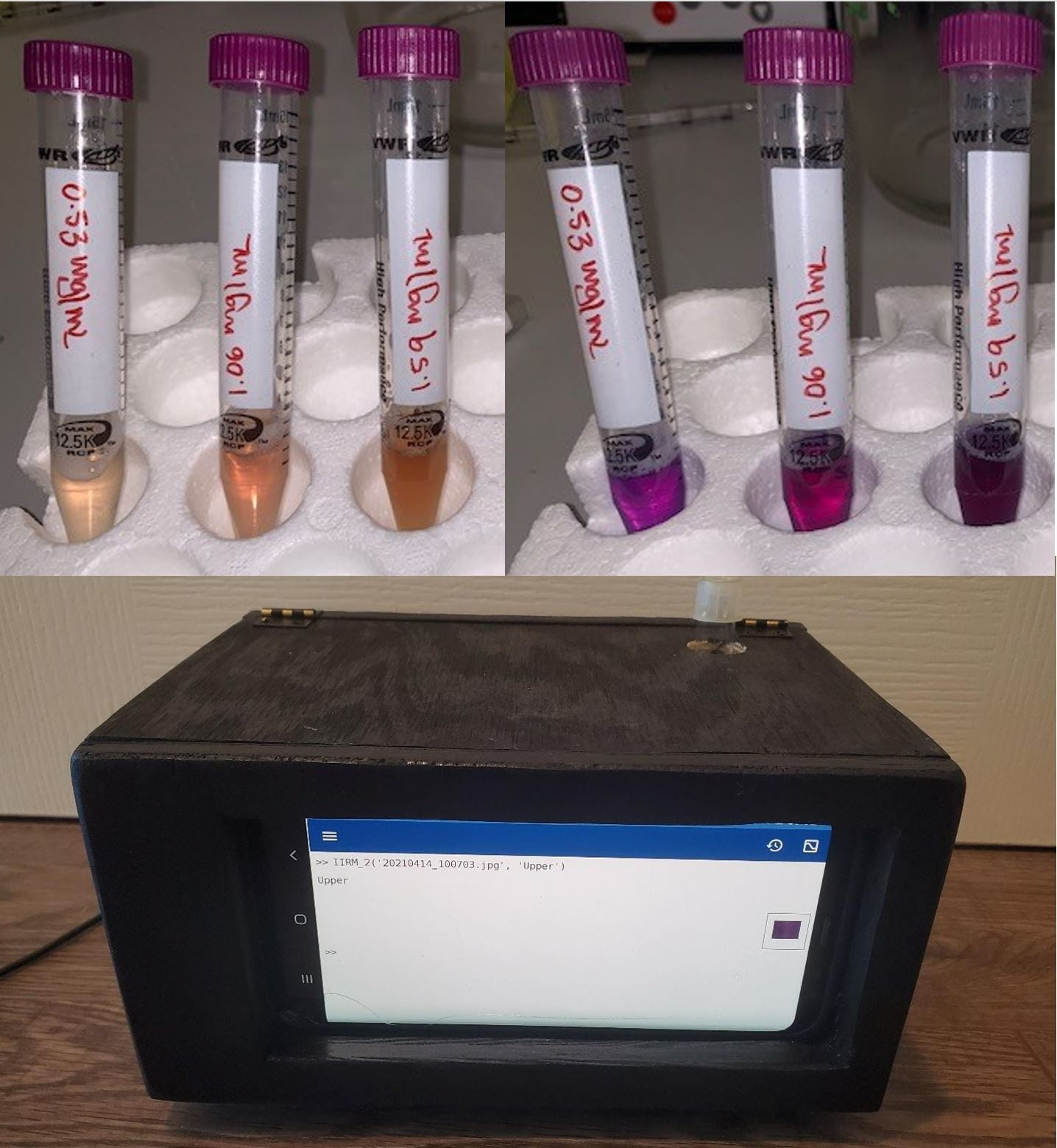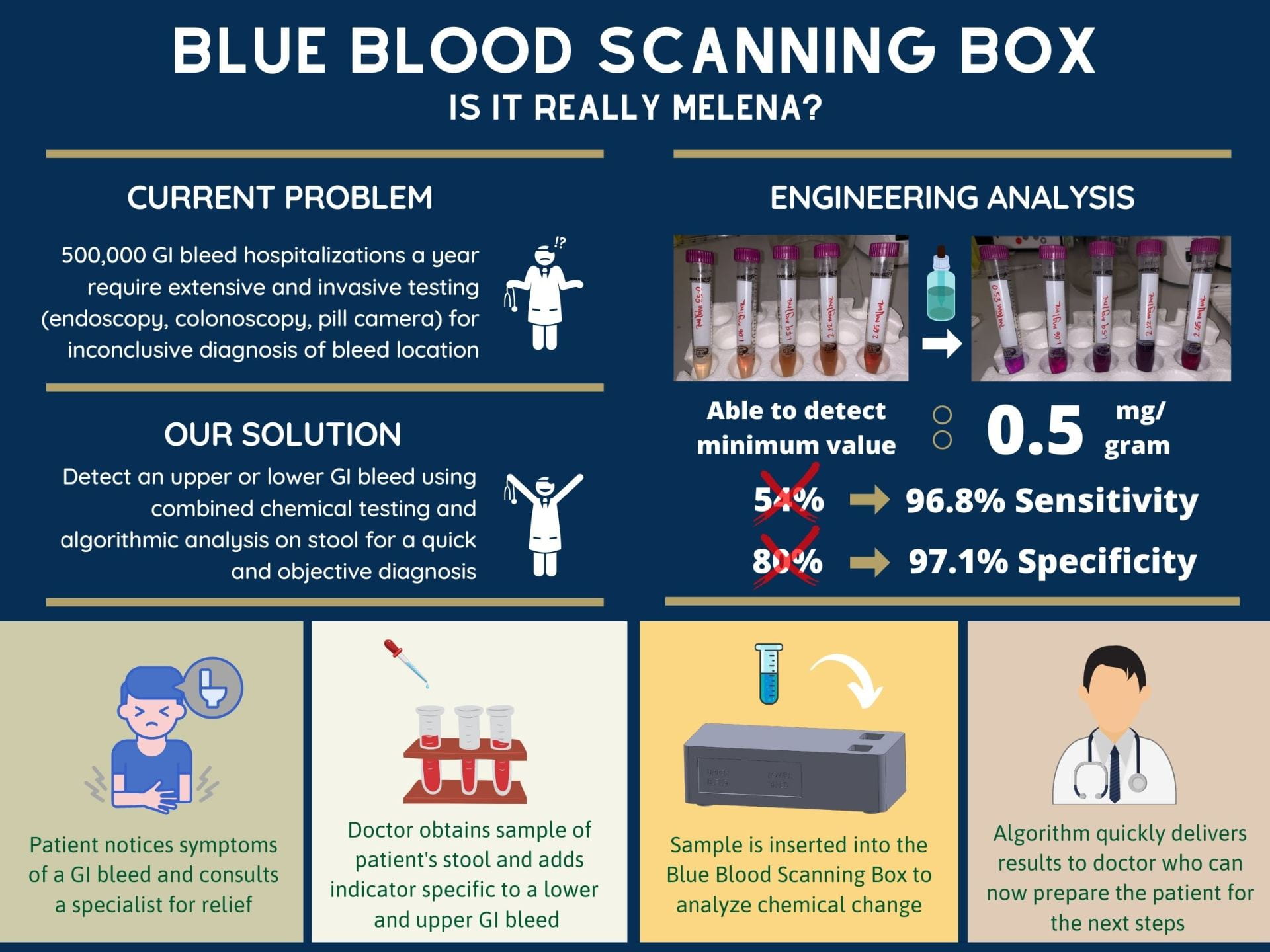Connect our team on LinkedIN!
Gabriella Kabboul, Elizabeth Albright, Azimul Hoque, Terese Navarra, Anthony Pisaturo
Is It Really Melena
Distinguishing between Upper and Lower GI Tract Bleeds
Photo of the Blue Blood Scanning Box and test tubes with color changing indicator for an upper GI bleed. Here, a test tube containing simulated upper GI blood from a stool sample and color indicator is inserted on the top right of the Blue Blood Scanning Box. After the test tube is inserted, the Blue Blood Scanning Box takes a picture of the test tube. The device analyzes the image and based on pre-set parameters from testing, the device outputs “Upper” indicating that this sample most likely is an upper GI bleed.



